Aviation
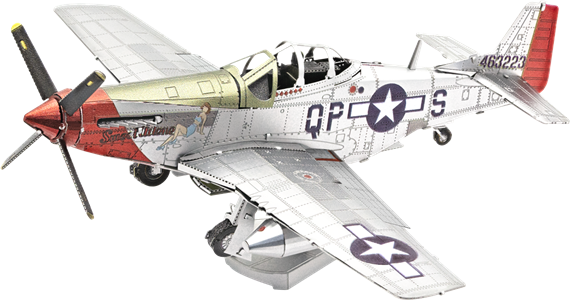
MMS180
P-51D Mustang™ Sweet Arlene
2 Sheets
Challenging
Is an American long-range, single-seat fighter and fighter-bomber used during World War II and the Korean War. This P-51D model was flown by Lt. Bowers of the 4th Fighter Group, 334th Squadron. It was named "Sweet Arlene" and was credited with six enemy aircraft destroyed.
Instructions to assemble this model with a raised landing gear configuration can be found here:
https://www.metalearth.com/flyingp51
$0.00
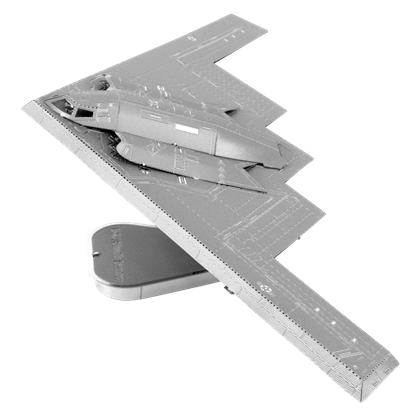
ICX113
Premium Series B-2A Spirit
1 Sheet
Moderate
Also known as the Stealth Bomber, is an American heavy penetration strategic bomber, featuring low observable stealth technology designed for penetrating dense anti-aircraft.
$0.00
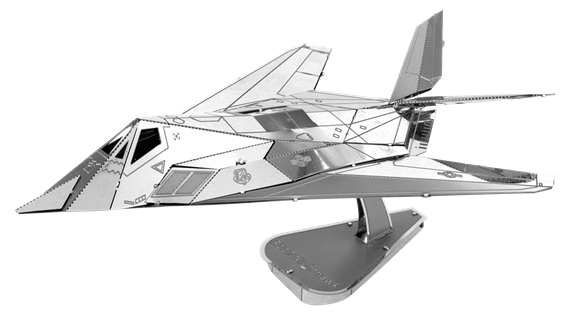
MMS164
F-117 Nighthawk
2 Sheets
Moderate
Is a USAF twin engine stealth attack aircraft that was developed in Lockheed’s secretive Skunk Works division.
It was the first operational aircraft to be designed around stealth technology. The F-117 was well publicized for its role in the Persian Gulf War and remained active until 2008 when it was replaced by the F-22 Raptor
It was the first operational aircraft to be designed around stealth technology. The F-117 was well publicized for its role in the Persian Gulf War and remained active until 2008 when it was replaced by the F-22 Raptor
$0.00
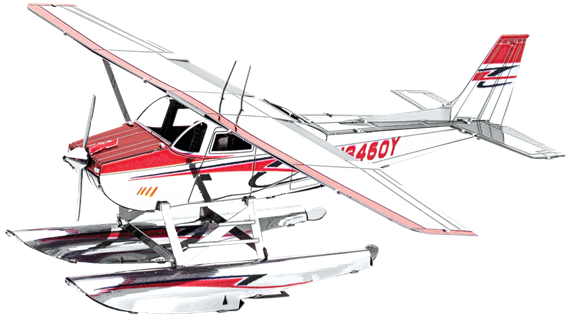
MMS111
Cessna 182 Floatplane
2 Sheets
Moderate
Cessna 182 is a four-seat light aircraft with fixed landing gear that is powered by a 230 hp Continental engine. The plane was designed as the tricycle gear variant of the Cessna 180. Designed with additional cabin space, it has become a popular floatplane for supplying towns and villages in remote areas.
$0.00
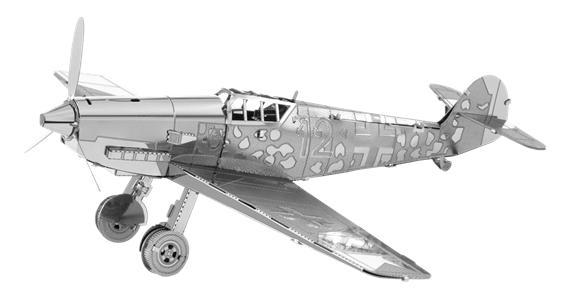
MMS118
MESSERSCHMITT BF-109
1 Sheet
Moderate
Was a German World War II fighter aircraft that first saw operational service during the Spanish Civil War (1939) and later became the backbone of the Luftwaffe's fighter force. The Bf 109 was the most produced fighter aircraft in history with a total of 33,984 airframes produced from 1936 up to April 1945.
Item#:
$0.00
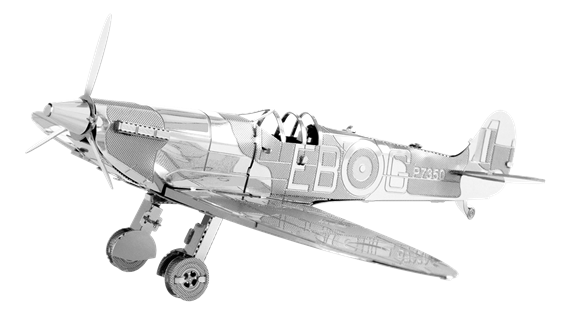
MMS110
SUPERMARINE SPITFIRE
1 Sheet
Easy
The most widely produced and strategically important British single-seat fighter of World War II. The Spitfire, renowned for winning victory laurels in the Battle of Britain (1940-41), served in every theatre of the war and was produced in more variants than any other British aircraft.
$0.00
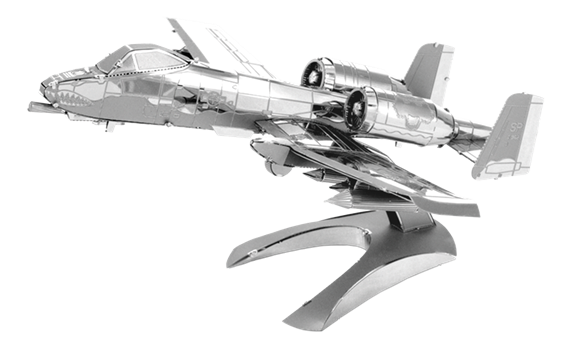
MMS109
A-10 WARTHOG®
2 Sheets
Moderate
Is a single seat jet fighter powered by twin turbofan engines. Fairchild-Republic developed the A-10 for the United States Air Force. Commonly referred to as the “Warthog”, this jet fighter is particularly effective at close air support for ground troops.
$0.00
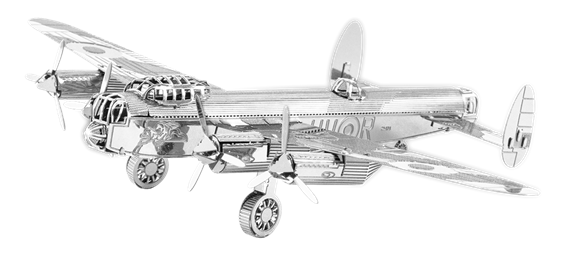
MMS067
AVRO LANCASTER BOMBER
1 Sheet
Moderate
Is a British four-engine heavy bomber used by the RAF in World War II. It became the most successful night time bomber of the war and flew 156,000 sorties. The bomber gained additional distinction for carrying the famous Upkeep "Bouncing bomb" for Operation Chastise in attacks on dams in the Ruhr Valley.
$0.00
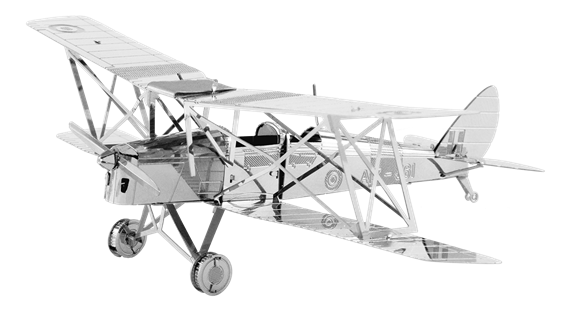
MMS066
DE HAVILLAND TIGER MOTH
1 Sheet
Moderate
Is a 1930s biplane designed by Geoffrey de Havilland and was operated by the Royal Air Force (RAF) and others as a primary trainer. It is a very easy plane to fly with a stall speed of only 25 knots. However, it has no electrical system and must be started by hand.
$0.00
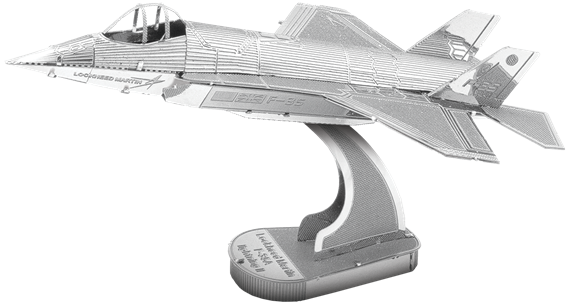
MMS065
F-35 LIGHTNING II
1 Sheet
Moderate
Is a family of single-seat, single-engine, fifth generation multirole fighters that are designed to perform ground attack, reconnaissance, and air defense missions with stealth capability. The F-35 has three main models; the F-35A employs conventional takeoff and landing, the F-35B will be used for short take-off and vertical-landings, and the F-35C will be carrier-based. The F-35 models are intended to provide the bulk of tactical airpower for the U.S. Air Force, Marine Corps and Navy over the coming decades.
$0.00
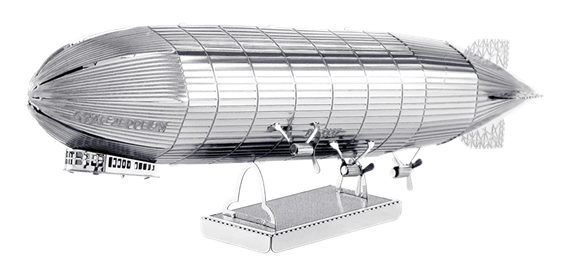
MMS063
GRAF ZEPPELIN
2 Sheets
Moderate
Was a hydrogen-filled, rigid airship which operated commercially from 1928 to 1937. During that time it made 590 flights and flew more than a million miles. The Zeppelin could achieve a top speed of 80 mph (70 knots) at its maximum thrust of 2,650 horsepower and had a useable payload of 15,000 kg (33,000 lbs).
$0.00
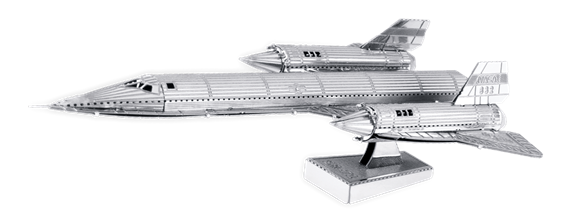
MMS062
SR-71 BLACKBIRD
1 Sheet
Moderate
Was a long-range, Mach 3.5+ strategic reconnaissance aircraft developed by Lockheed and its Skunk Works® division. It was the first aircraft to be constructed mainly of titanium. At full velocity the airplane surface heats up to over 260°C+ (500 °F). A total of 3,551 missions were flown and not one Blackbird was lost due to enemy military retaliation.
Note: Skunk Works is the nickname for Lockheed's Advanced Development Programs. Skunk Works engineers have developed highly advanced, military aircraft, often in secret, since World War II.
Note: Skunk Works is the nickname for Lockheed's Advanced Development Programs. Skunk Works engineers have developed highly advanced, military aircraft, often in secret, since World War II.
$0.00
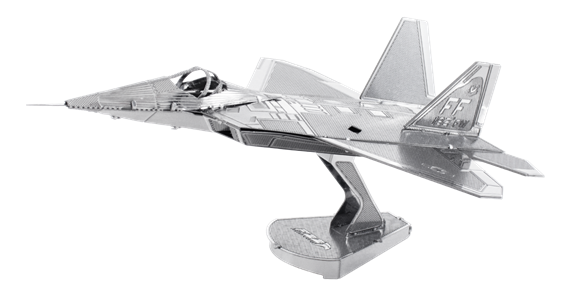
MMS050
F-22 RAPTOR
1 Sheet
Moderate
The Lockheed Martin/Boeing F-22 Raptor is a single-seat, twin-engine fifth-generation super-maneuverable fighter aircraft that uses stealth, speed agility, precision and situational awareness, combined with air-to-air and air-to-ground combat capabilities, makes it the best overall fighter in the world today.
$0.00
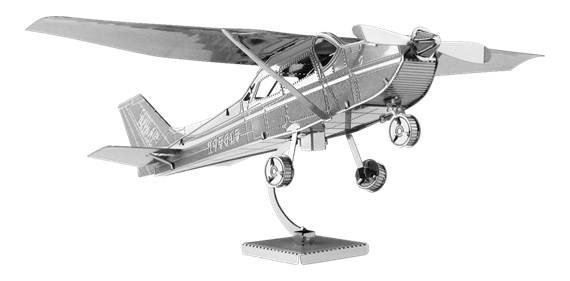
MMS045
CESSNA 172
1 Sheet
Moderate
A four-seat, single-engine, high-wing, fixed-wing aircraft. It was first flown in 1955 and is still in production today. More Cessna 172s have been built than any other aircraft.
$0.00

MMS043
SPIRIT OF SAINT LOUIS
1 Sheet
Moderate
The Spirit of Saint Louis was the first airplane to be flown solo, non-stop across the Atlantic. On May 20th 1927, at 7:52 a.m. this custom-built, single engine, single-seat monoplane flown by Charles Lindbergh departed Long Island, New York on its historic flight. After 33.5 hours and 3,600 miles, the plane arrived safely at Le Bourget Field in Paris.
$0.00
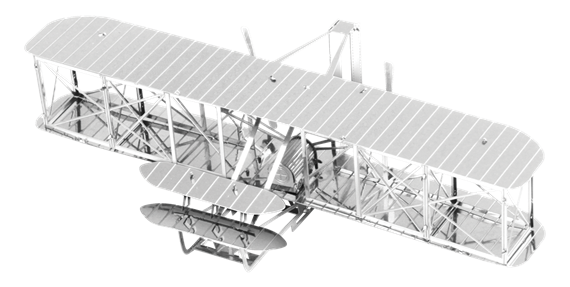
MMS042
WRIGHT BROTHERS AIRPLANE
1 Sheet
Moderate
On December 17, 1903, Orville Wright piloted the first powered airplane 20 feet above a wind-swept beach in North Carolina. The flight lasted 12 seconds and covered 120 feet.
$0.00















